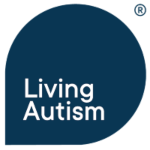Students throughout the country will soon be making the transition to a new school year or a new grade. This includes an increasing number of special needs children identified with autism spectrum disorder (ASD). Since Congress added autism as a disability category to the Individuals with Disabilities Education Act (IDEA) in 1990, there has been a dramatic increase in the number of students receiving special education services under this category.
The beginning of a new school year is an exciting yet anxious time for both parents and children. It typically brings a change in the daily routine established over the summer months. This transition can be especially challenging for families with children on the autism spectrum. While change can be difficult, the following tips will help prepare a child with ASD for the new school year and make the transition back to school easier.
1. Prepare and reintroduce routines.
Familiarize and reintroduce your child to the school setting. This may mean bringing your child to the school or classroom, showing your child a picture of their teacher and any classmates, or meeting the teacher before the first day of school. If possible, arrange to visit the teacher or the school a week or two before the first day. If this isn’t feasible, visit the school building or spend some time on the playground. Driving by the school several times is another good idea. You may also want to drive your child on the first day as well if they ride a bus to school. For many children on the spectrum, riding a bus to school on the first day can result in a sensory “overload.” Gradually easing them into the transportation routine will be helpful for everyone.
2. Expect the unexpected.
Parents cannot anticipate everything that might happen during the school day. Allow more time for all activities during the first week of school. Prepare your child for situations that may not go as planned. Discuss a plan of action for free time, such as lunch and recess. Use social stories to familiarize your child with routines and how to respond when an unexpected event occurs. Anticipate sensory overload. The activity, noise and chaos of a typical classroom (and cafeteria) can sometimes be difficult to manage. Establish a plan of action for this situation, possibly a quiet room where the child can take a short break. If your child has dietary issues, determine in advance how this will be managed so as to avoid any miscommunication.
3. Review and teach social expectations.
Although many children may transition easily between the social demands of summer activities and those required in the classroom, children on the autism spectrum may need more clear-cut (and literal) reminders. Review the “dos and don’ts” of acceptable school behavior. You can also create a schedule of a typical school day by using pictures and talk about how the school day will progress. Create a social story or picture schedule for school routines. Start reviewing and practicing early. If possible, meet with teachers and administrators to discuss your child’s strengths and challenges. Remember, you are your child’s best advocate. Establish communication early to develop positive relationships with your child’s teacher and school. Rehearse new activities. Ask the teacher what new activities are planned for the first week. Then, prepare your child by performing, practicing, and discussing them. This rehearsal will reduce anxiety when new activities take place during the beginning of school.
In summary, do everything possible to help reduce the stress level for your child and family during this transition time. Don’t forget to prepare yourself! A calm and collected parent is better able to help their child make a successful transition back to school.
Please visit bestpracticeautism.com for timely articles and postings, including topics such as screening, evaluation, positive behavior support (PBS), self-management, educational planning, IEP development, gender differences, evidence-based interventions (EBI), and more.
Lee A. Wilkinson, PhD, NCSP is author of the award-winning book, A Best Practice Guide to Assessment and Intervention for Autism and Asperger Syndrome in Schools, published by Jessica Kingsley Publishers. He is also editor of a recent volume in the American Psychological Association (APA) School Psychology Book Series,Autism Spectrum Disorder in Children and Adolescents: Evidence-Based Assessment and Intervention in Schools and, most recently, author of the book,Overcoming Anxiety and Depression on the Autism Spectrum: A Self-Help Guide Using CBT.
© Lee A. Wilkinson, PhD




